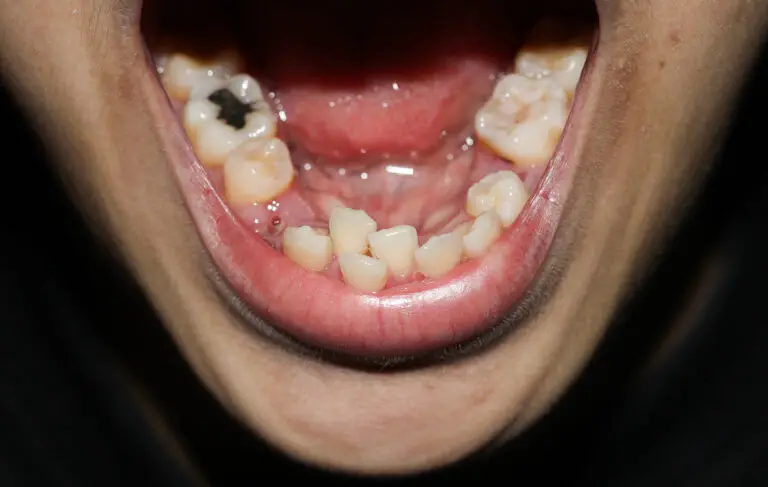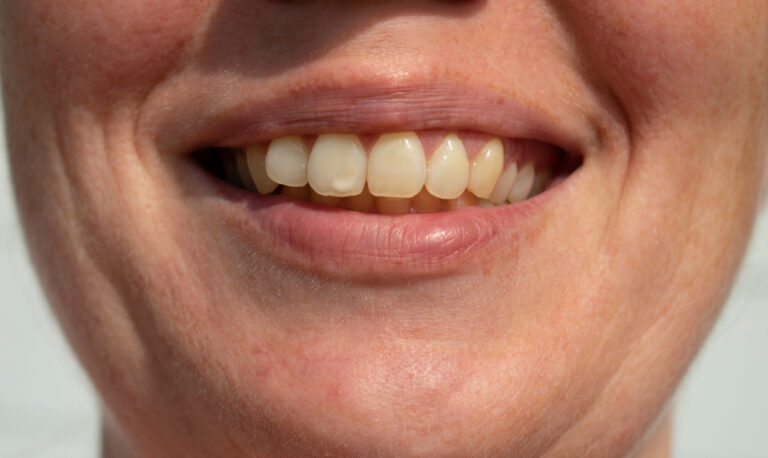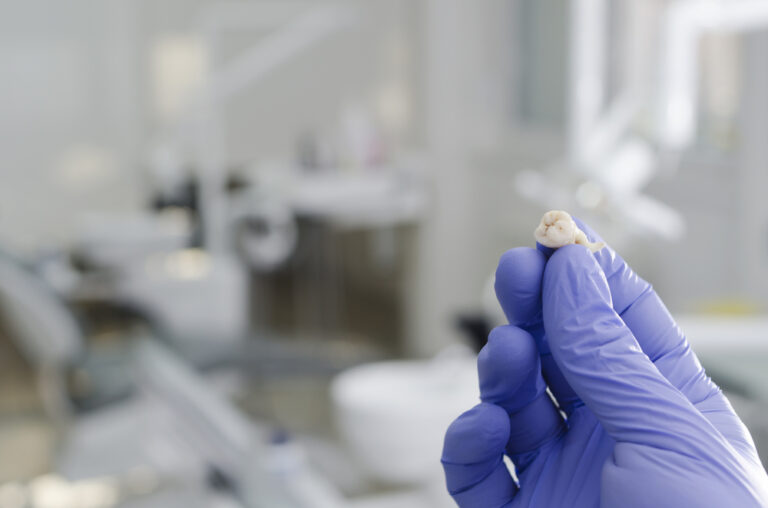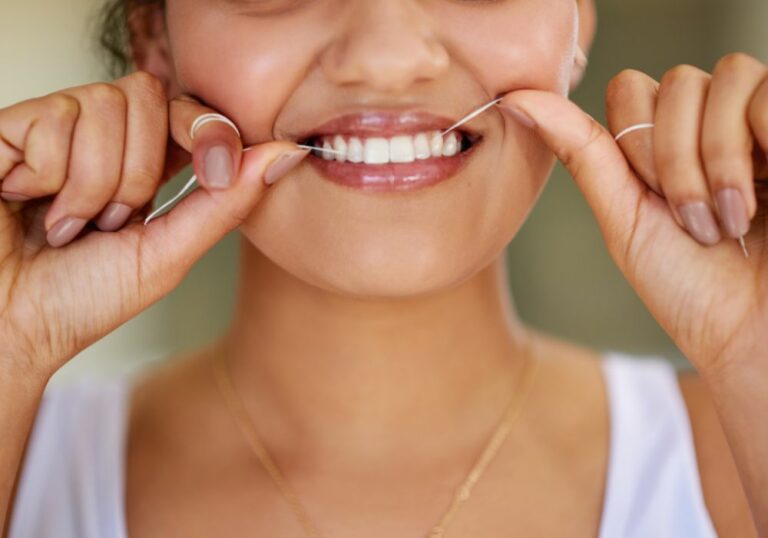If you’re reading this, chances are you have teeth. Teeth are hard, calcified structures that are found in the jaws of humans and other vertebrates. Teeth play an important role in our daily lives, from helping us chew and speak properly to contributing to our overall appearance.
Teeth are made up of multiple layers, including enamel, dentin, and pulp. Enamel is the hard, outermost layer of the tooth that protects it from damage. Dentin is a softer layer of the tooth that lies beneath the enamel, and pulp is the innermost layer of the tooth that contains nerves and blood vessels. Each type of tooth has a specific shape and function, whether it be biting, chewing, or grinding up food.
It’s important to take care of your teeth to prevent dental problems such as cavities, gum disease, and tooth loss. Good oral hygiene includes brushing your teeth twice a day, flossing daily, and visiting your dentist regularly. Understanding the anatomy and function of your teeth can help you better care for them and maintain good oral health.
Understanding Teeth
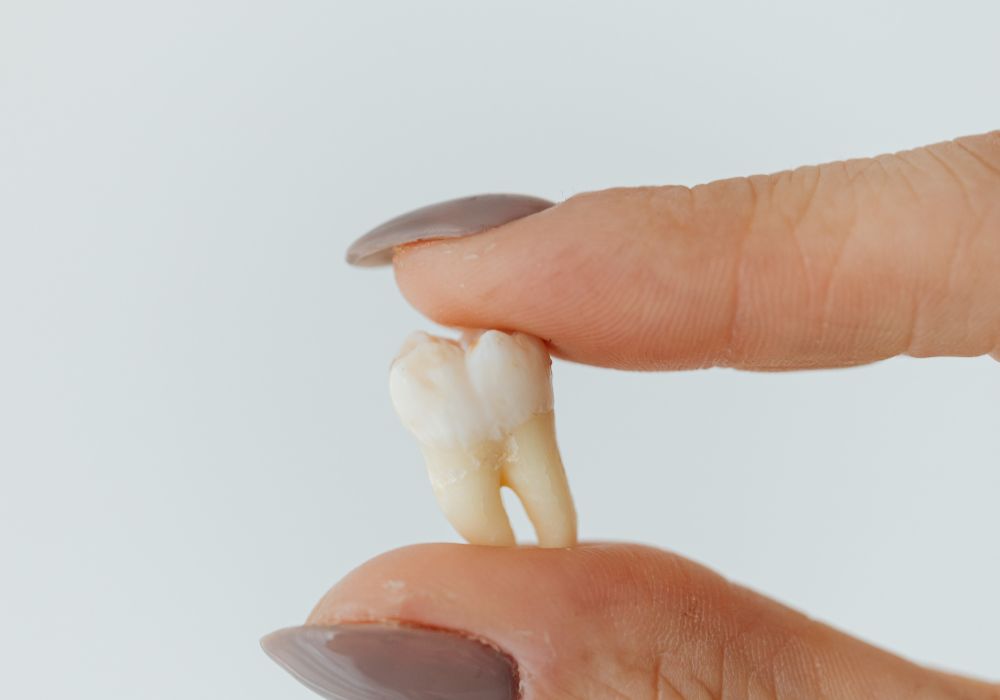
Your teeth are an essential part of your body. They are the hardest substances in your body and play a vital role in chewing, biting, and speech. Understanding the anatomy of your teeth can help you take better care of them.
Parts of a Tooth
A tooth has several parts, including:
- Enamel: This is the hard, outer layer that covers the tooth and protects it from damage.
- Dentin: This is the softer layer beneath the enamel that makes up most of the tooth.
- Pulp: This is the soft tissue inside the tooth that contains nerves and blood vessels.
- Root: This is the part of the tooth that is anchored in the jawbone.
Types of Teeth
There are four different types of teeth in your mouth, each with a specific function:
- Incisors: These are the eight teeth in the front of your mouth, four on top and four on the bottom. They are used for biting into food.
- Canines: These are the four sharp teeth next to the incisors, two on top and two on the bottom. They are used for tearing and ripping food.
- Premolars: These are the eight teeth between the canines and molars, four on top and four on the bottom. They are used for crushing and grinding food.
- Molars: These are the twelve teeth at the back of your mouth, six on top and six on the bottom. They are used for crushing and grinding food.
Taking Care of Your Teeth
Taking care of your teeth is essential for maintaining good oral health. Here are some tips for keeping your teeth healthy:
- Brush twice a day: Brush your teeth for two minutes, twice a day, using a fluoride toothpaste.
- Floss daily: Flossing helps remove food particles and plaque from between your teeth.
- Eat a healthy diet: A diet rich in fruits, vegetables, and whole grains can help keep your teeth healthy.
- Limit sugary and acidic foods: Sugary and acidic foods can damage your teeth and lead to cavities.
- Visit your dentist regularly: Regular dental checkups can help prevent tooth decay and other oral health problems.
By understanding the anatomy of your teeth and taking care of them properly, you can maintain good oral health and keep your teeth healthy for life.
Types of Teeth
Your mouth contains four different types of teeth: incisors, canines, premolars, and molars. Each type of tooth is uniquely shaped and serves a specific purpose in the chewing process.
Incisors
Incisors are the eight front teeth in your mouth, four on the top and four on the bottom. They are flat and thin, and their main function is to bite into food. Incisors are the first teeth to erupt in your mouth, usually around six months of age for your baby teeth and six to eight years for your permanent teeth.
Canines
Canines are the four pointed teeth located next to your incisors, two on the top and two on the bottom. They have a sharp, pointed edge and are used for tearing and ripping food. Canines are the longest teeth in your mouth and typically erupt between nine and 12 years of age.
Premolars
Premolars are the eight teeth located between your canines and molars, four on the top and four on the bottom. They have a flat surface with ridges and are used for grinding and crushing food. Premolars usually erupt between 10 and 12 years of age.
Molars
Molars are the largest teeth in your mouth, located at the back of your mouth. You have 12 molars, six on the top and six on the bottom. They have a large, flat surface with ridges and are used for grinding and crushing food. The first set of molars usually erupts around six years of age, while the second set (wisdom teeth) typically erupts between 17 and 25 years of age.
Understanding the different types of teeth in your mouth can help you take better care of your oral health. By brushing and flossing regularly and visiting your dentist for regular checkups, you can ensure that your teeth stay healthy and strong for years to come.
Tooth Structure
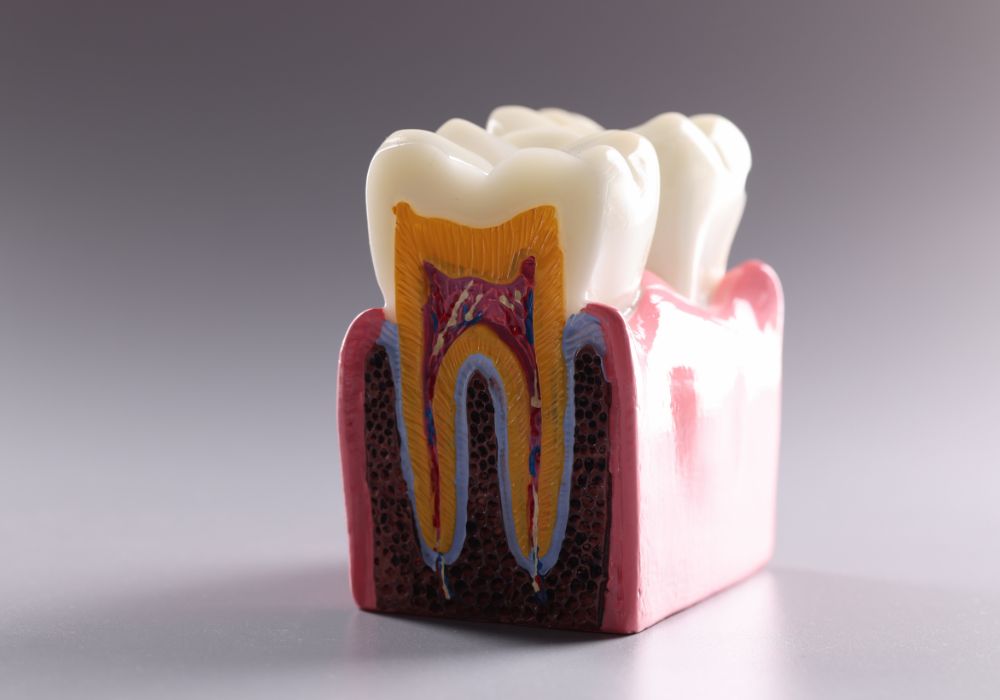
Your teeth are complex structures that are essential for biting, chewing, and speaking. Understanding the different parts of your teeth can help you take better care of them. Here are the three main layers of your teeth:
Enamel
Enamel is the hard, outermost layer of your teeth. It is made up of tightly packed mineral crystals, which make it the hardest substance in your body. Enamel protects the inner layers of your teeth from damage caused by chewing, biting, and grinding. c.
Dentin
Dentin is the layer of your tooth that lies beneath the enamel. It is a softer, more porous material that contains tiny tubes called dentinal tubules. These tubules allow hot and cold temperatures to reach the nerves in your teeth, which can cause sensitivity. Dentin also makes up the bulk of your tooth and gives it its shape.
Pulp
Pulp is the innermost layer of your tooth. It is a soft, living tissue that contains blood vessels, nerves, and connective tissue. Pulp is responsible for nourishing your tooth and keeping it alive. If your tooth becomes infected or damaged, the pulp can become inflamed and painful.
Taking care of your teeth involves keeping all three layers healthy. Brushing and flossing regularly can help prevent decay and damage to your enamel. Eating a healthy diet and avoiding sugary and acidic foods can also help protect your teeth. If you experience any pain or sensitivity in your teeth, it is important to see a dentist right away to prevent further damage.
Tooth Development
The development of teeth is a complex process that begins before birth and continues throughout childhood. Understanding the stages of tooth development can help you better care for your child’s teeth and ensure they develop healthy, strong teeth.
Baby Teeth
Baby teeth, also known as primary teeth, begin to develop before birth. The first stage of tooth development begins at around 6 weeks of gestation when the basic substance of the tooth forms. The hard tissue that surrounds the teeth is formed around 3 to 4 months of gestation.
At birth, most babies have 20 primary teeth that are hidden under the gums. These teeth begin to emerge through the gums at around 6 months of age and continue to erupt until the child is about 2-3 years old. It is important to take care of baby teeth as they are important for chewing, speaking, and holding space for the permanent teeth.
Permanent Teeth
Permanent teeth begin to develop around the age of 6 and continue to develop until the late teenage years. The process of permanent tooth development involves the formation of tooth buds, which eventually grow into the full-sized teeth.
There are 32 permanent teeth in total, 16 in the upper jaw and 16 in the lower jaw. The permanent teeth replace the baby teeth and are designed to last a lifetime. It is important to take care of permanent teeth by practicing good oral hygiene habits such as brushing and flossing regularly and visiting the dentist for regular checkups.
In conclusion, understanding the stages of tooth development can help you better care for your child’s teeth and ensure they develop healthy, strong teeth. By taking care of baby teeth and permanent teeth, you can help your child maintain good oral health throughout their lifetime.
Common Tooth Problems

Taking care of your teeth is important to maintain good oral health. However, even with proper dental hygiene, you may still experience some common tooth problems. Here are some of the most common tooth problems that you may encounter:
Tooth Decay
Tooth decay, also known as cavities, is a common dental problem that affects people of all ages. It occurs when plaque, a sticky film of bacteria, builds up on your teeth and produces acid that erodes your tooth enamel. If left untreated, tooth decay can lead to toothache, infection, and even tooth loss.
To prevent tooth decay, it is important to brush your teeth twice a day with fluoride toothpaste, floss daily, and limit your intake of sugary and acidic foods and drinks. Regular dental check-ups and cleanings can also help detect and treat tooth decay early.
Gum Disease
Gum disease, also known as periodontal disease, is an infection of the gums that can damage the soft tissue and bone that support your teeth. It is caused by the buildup of plaque and tartar on your teeth, which can lead to inflammation and bleeding of the gums.
Symptoms of gum disease include red, swollen, and bleeding gums, bad breath, and loose teeth. If left untreated, gum disease can lead to tooth loss and other serious health problems.
To prevent gum disease, it is important to practice good oral hygiene, such as brushing and flossing regularly, and visiting your dentist for regular check-ups and cleanings. If you suspect you have gum disease, seek treatment from your dentist as soon as possible.
Tooth Erosion
Tooth erosion is the gradual loss of tooth enamel caused by acid erosion. It can be caused by a variety of factors, including acidic foods and drinks, acid reflux, and certain medications.
Symptoms of tooth erosion include tooth sensitivity, discoloration, and rounded teeth. If left untreated, tooth erosion can lead to tooth decay and tooth loss.
To prevent tooth erosion, it is important to limit your intake of acidic foods and drinks, such as citrus fruits, soda, and sports drinks. You should also avoid brushing your teeth immediately after consuming acidic foods and drinks, as this can further erode your tooth enamel.
Frequently Asked Questions
How many teeth do humans have on average?
On average, adults have 32 teeth, including 8 incisors, 4 canines, 8 premolars, and 12 molars. However, some people may have more or fewer teeth due to various reasons, such as genetics or tooth extraction.
What are the different types of teeth and their functions?
There are four types of teeth: incisors, canines, premolars, and molars. Incisors are used for biting and cutting food, canines are used for tearing and ripping food, premolars are used for crushing and grinding food, and molars are used for grinding and chewing food.
Why do we need to extract teeth?
Teeth may need to be extracted due to various reasons, such as severe decay, gum disease, overcrowding, or trauma. Extraction may also be necessary for wisdom teeth that are impacted or causing pain.
What is the purpose of baby teeth?
Baby teeth, also known as primary teeth, serve as placeholders for permanent teeth. They help children chew food properly, speak clearly, and develop proper jaw and facial structure. Baby teeth typically start to fall out around age 6 and are replaced by permanent teeth.
What are some common causes of wisdom tooth pain?
Wisdom tooth pain may be caused by various reasons, such as impaction, infection, decay, or gum disease. Other factors, such as teeth grinding or pressure from nearby teeth, may also contribute to wisdom tooth pain.
How can I whiten my teeth safely?
There are various safe and effective ways to whiten teeth, such as using whitening toothpaste or strips, getting professional teeth whitening treatments from a dentist, or using natural remedies like baking soda or activated charcoal. However, it’s important to follow instructions carefully and avoid overusing whitening products, as they may cause tooth sensitivity or damage.


